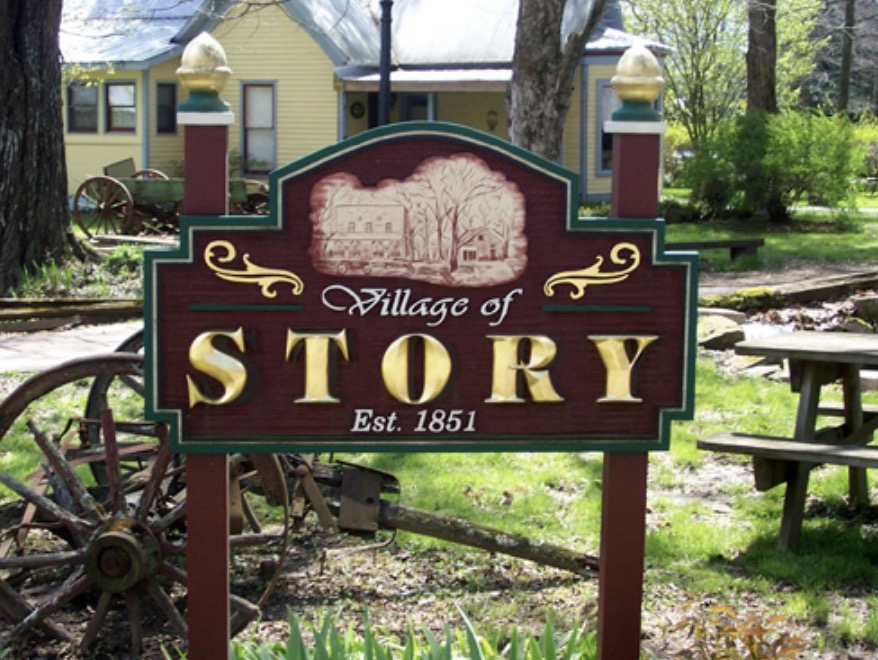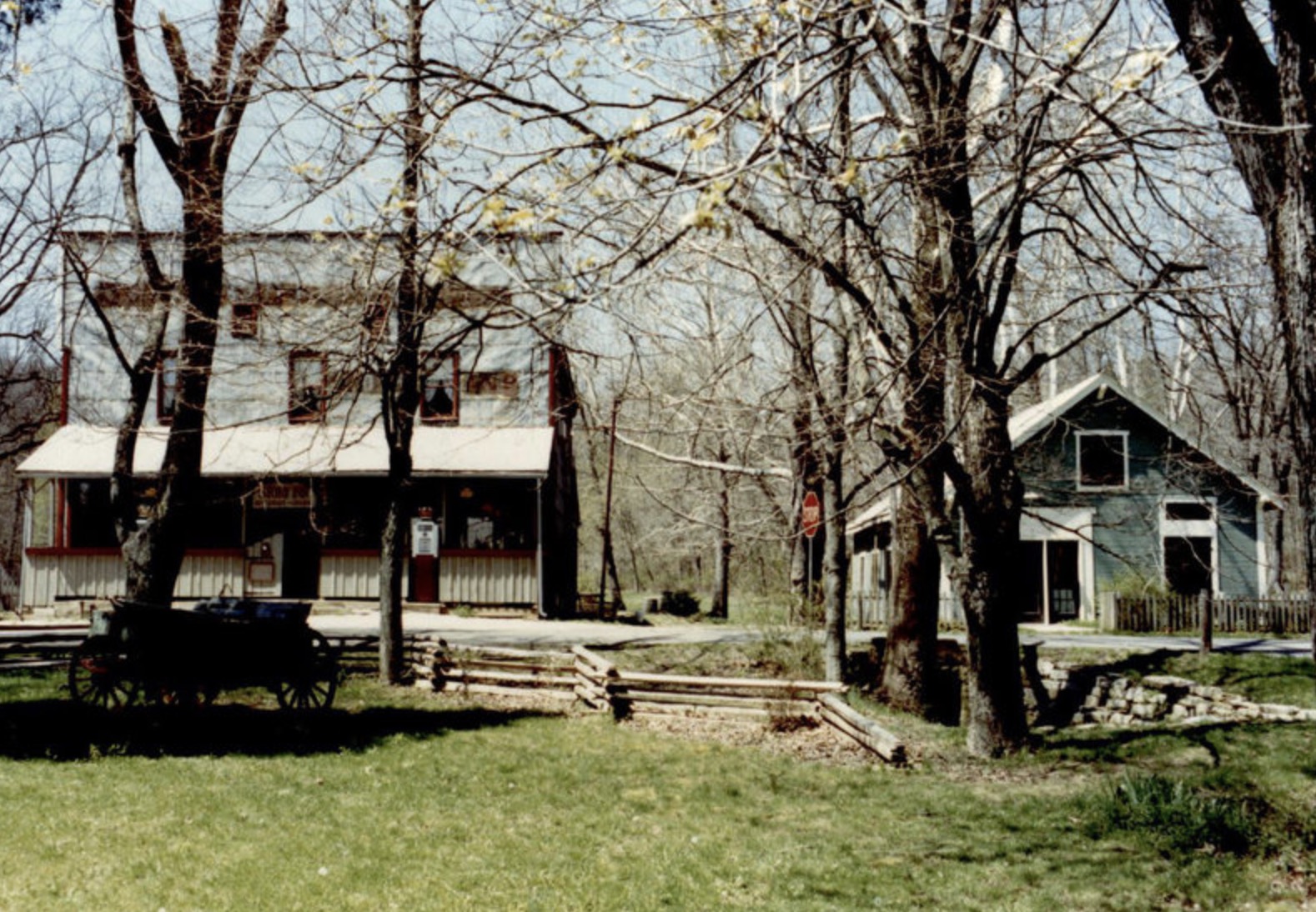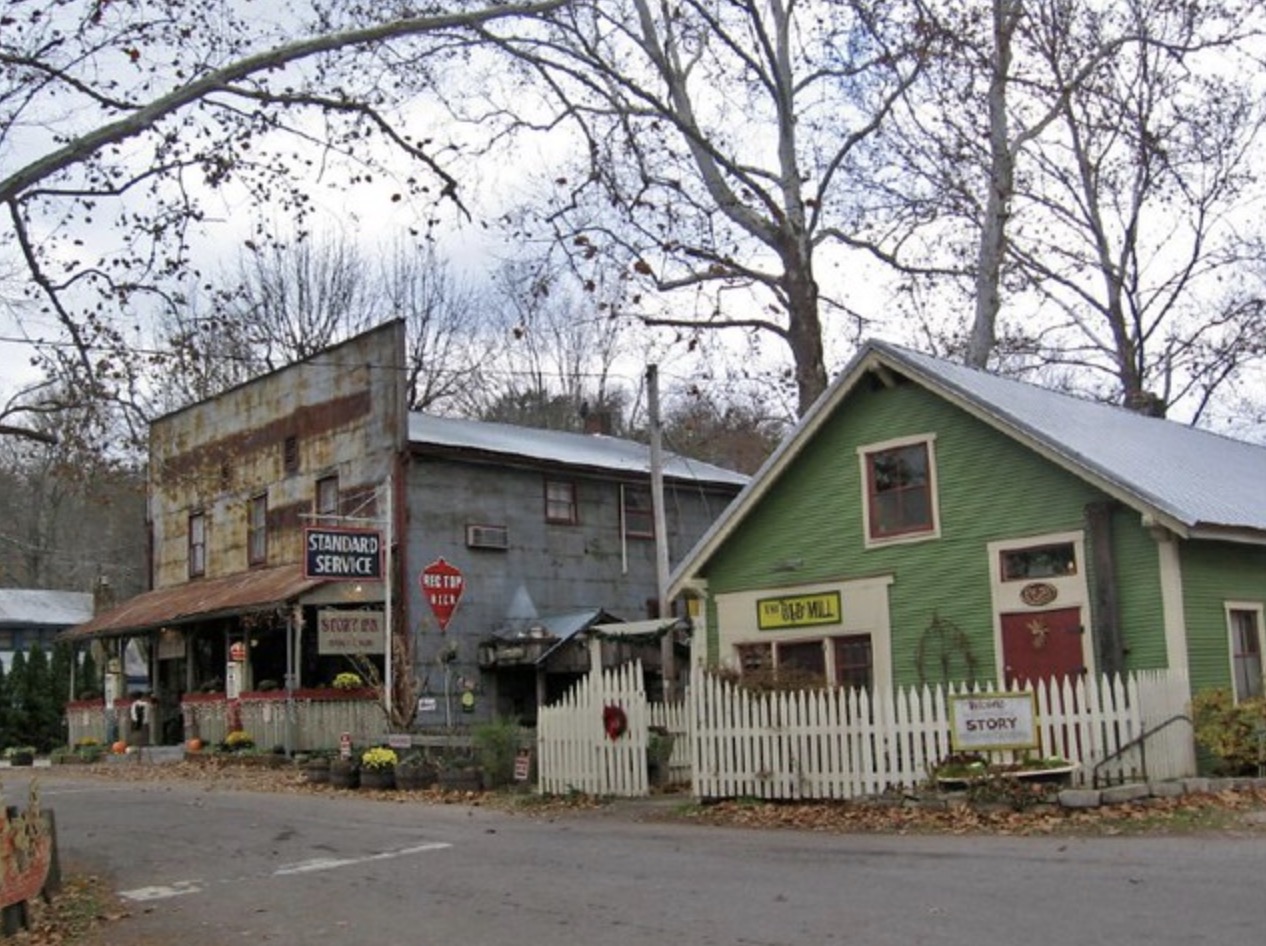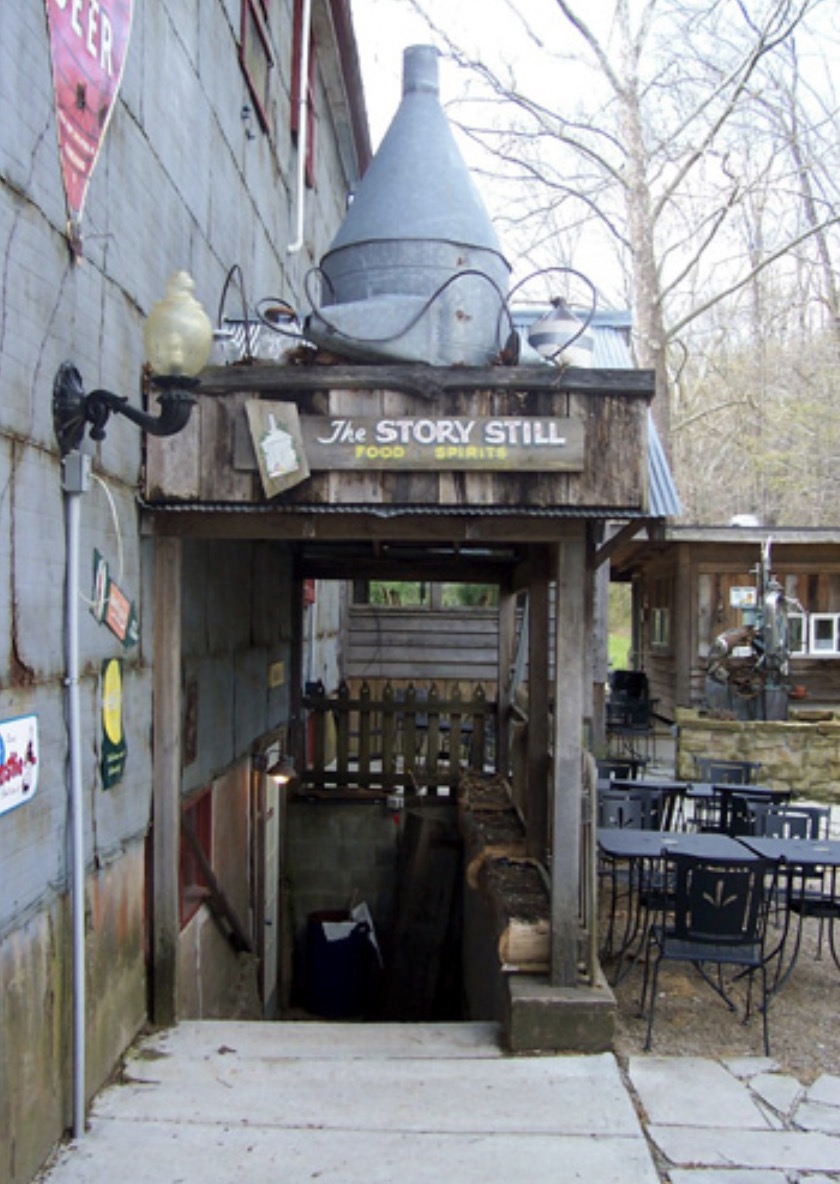Lots of us have dreams about what we’ll do once we retire. Maybe you want to move somewhere sunny and relax all day. Or maybe you want to travel the world. Or maybe you want to own an entire town, that you can rule with an iron fist.
Just think of all you could do as mayor for life! You could throw a parade every day in your honor! You could hand out parking tickets whenever you felt like it! You could rename all the streets after your pets, real and imaginary! And if your subjects don’t like it, you can put them to death! (Confession: I don’t really know what a mayor does.)
If all of that sounds like the perfect retirement plan, you can buy the entire town of Story, Indiana right now. For just $3.8 million, you’ll get 17.4 acres of property, along with six houses, fenced horse pastures, several barns, a grain mill, and two 19th century outhouses. You’ll also get seven new neighbors–the town’s current population is three people and four dogs.

Photo Credit: Offbeat Travel
Right now, Story’s only employer is the Story Inn, a hotel and restaurant that attracts a healthy amount of tourists every year. The Inn won’t be included in the sale. The current owner of Story, Indiana, Rick Hofstetter, wants to separate the Inn from the town itself. “The town’s fortunes should be decoupled from our hospitality operations,” he told The Herald Times. “Macy’s doesn’t own the mall.”
But Hofstetter also wants to ensure that the new owner will continue to preserve Story. Story was built in 1851, and many of its original buildings still stand today. Hofstetter describes Story as “perhaps the best surviving example of a 19th-century pioneer logging/farming community in the American Midwest.” In March, Story was added to the National Register of Historic Places.

Photo Credit: Northwest Indiana Times
Ideally, the town’s new owner would be a history buff, because the town is full of it. The town of Story was first founded in 1851, when our 13th president, Millard Fillmore, gifted physician George P. Story with 173 acres of Indiana farmland. Dr. Story built “Storyville,” centered around his medical practice, and soon families began moving to the area. In 1882, the town got its first dry goods store and post office, and the name was eventually shortened to “Story.”
But Story was never a large town. At its height, it was only home to 175 residents. When the Great Depression hit America in 1929, most of the town’s few citizens moved elsewhere for work. Story was nearly a ghost town.

Photo Credit: Benjamin
Then in 1978, a man who goes only by the name “Benjamin” purchased the town along with his wife Cindi, for just $65,000. Initially, Benjamin described Story as “very dark and very quiet.”
Benjamin and Cindi planned to convert the old general store into a bed and breakfast–what is now the Story Inn–but it was was easier said than done. When Benjamin and Cindi bought the town, they discovered that it “Had no indoor plumbing when we moved there, only an outhouse in back.” Worse, the second story of the was just one open room, used to assemble Studebaker buggies.
But eventually, he and Cindi transformed the general store into a B&B with 18 overnight rooms and a restaurant that could seat 100.

Photo Credit: Paul McClure
The Story Inn closed in 1992, and Benjamin and Cindi sold the town shortly after. In 1999, Rick Hofstetter purchased the town at a sheriff’s tax auction. He continued Benjamin and Cindi’s work to preserve the town’s historic buildings.
Today, Hofstetter is one of Story’s three residents, the other two being Jacob and Kate Ebel, who run the Inn. Besides the four dogs, there’s also supposedly a ghost in one of the inn’s upstairs rooms. Guests have nicknamed her “The Blue Lady.”

Photo Credit: Offbeat Travel
The combined 40 years of upkeep have turned Story into a popular out-of-the-way tourist destination. Jacob and Kate Ebel offer a menu full of inventive dishes made from local ingredients. The tourist season runs from about May to October, and weekends at Story Inn are usually packed. Story even hosts two annual statewide booze festivals, the Indiana Wine Festival and the Hoosier Hop Beer Fest. Story might be tiny and remote, but it’s nothing like the ghost town it was in the 70’s.
Whoever buys Story next will be getting a pretty good deal that could make them a lot of money, but the novelty is a huge factor. As Hofstetter says, “It’s not every day someone gets to buy a town.”
h/t: Atlas Obscura and The New York Post
